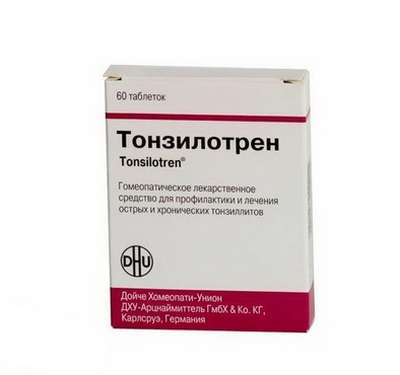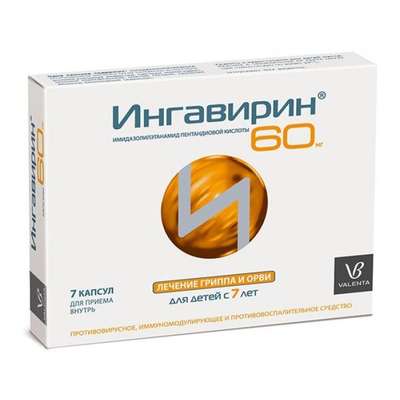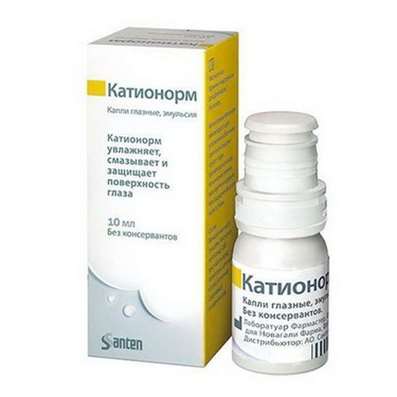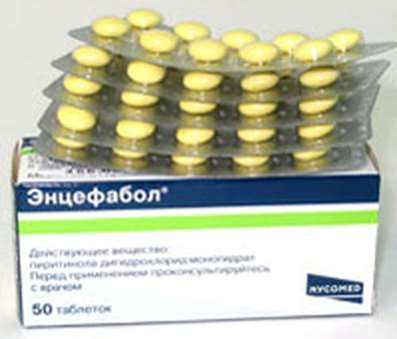Instruction for use: Solifenacin + Tamsulosin
I want this, give me price
Trade name of the drug - Vezomni
The Latin name of substances Solifenacin + Tamsulosin
Solifenacinum + Tamsulosinum (genus. Solifenacini + Tamsulosini)
Pharmacotherapeutic group:
M-Cholinolytics in combinations
Alpha-blockers in combination
The nosological classification (ICD-10)
N31.1 Reflex neuropathic bladder, not elsewhere classified: hyperreflexia; Overactive Bladder; detrusor hyperreflexia; detrusor hyperreflexia
N31.2 neurogenic bladder weakness, not elsewhere classified: Urinary incontinence in a stressful situation; Atony of bladder; Atony of the bladder (the sphincter) (neurogenic); Impaired function of the sphincter of the bladder; Neurogenic bladder disorders; Neurogenic bladder disorder; Neurogenic bladder; Functional insufficiency of the sphincter of the bladder; Imperative incontinence
N39.3 Involuntary urination: Urinary incontinence in women; Anishuriya; Urinary incontinence
N40 Hyperplasia of prostate gland: Prostate adenoma; BPH; Prostatauxe; prostate Hypertrophy; Dysuric disorders caused by benign prostatic hyperplasia; Dizuricheskie disorder with benign prostatic hyperplasia; Dysuria with prostate cancer; Benign prostatic giperpalaziya; Benign prostatic hyperplasia; Benign prostatic hyperplasia stages 1 and 2; Benign prostatic hyperplasia I degree; Benign prostatic hyperplasia II degree; Benign prostatic hypertrophy; The disease of the prostate gland; Acute urinary retention related to benign prostatic hyperplasia; Benign prostatic hyperplasia stages 1 and 2 in combination with prostatitis; paradoxical ischuria
R32 Urinary incontinence unspecified: daytime enuresis; Idiopathic bladder instability; Urinary incontinence; nocturia; The disorder of the bladder sphincter function; Spontaneous urination; Mixed forms of urinary incontinence; Functional disorders of micturition; Functional micturition disorders; Functional enuresis in children; Enuresis
R39.1 Other difficulties with micturition: Frequent urination; urinary retention; strangury; Obstructed flow of urine; Violation of urination; Violation of urination; Violation of bladder emptying; Violation of the outflow of urine; Frequent urination; Abnormalities of urination
Characteristics substances Solifenacin + Tamsulosin
Combined drugs to treat the symptoms of BPH.
Pharmacology
Mode of action - holinoliticheskoe, alpha-adrenoceptor blocking.
Pharmacodynamics
Mechanism of action. Combination drugs containing two active substances - solifenacin and tamsulosin. These surfactants have independent and complementary mechanisms of action in the treatment of LUTS associated with BPH, if filling symptoms.
Solifenacin - selective competitive inhibitor of the bladder muscarinic receptors, mainly m3 subtype has a low affinity or lack of affinity for other receptors, enzymes and ion channels.
Tamsulosin - alpha1-blocker. It is a selective competitive blocker of postsynaptic alpha1-adrenergic receptors, and especially alfa1A- alfa1D subtypes responsible for relaxation of smooth muscles of the lower urinary tract.
Pharmacodynamic effects. Solifenacin facilitates filling the bladder symptoms (irritative symptoms) associated with the action of acetylcholine which activates m3-cholinergic receptors in the bladder. Acetylcholine activates the contractile function of the bladder wall, which manifests itself in the form of urgent urge to urinate or urinary incontinence.
Tamsulosin facilitates emptying symptoms (obstructive symptoms) by relaxing the smooth muscles of the prostate, bladder neck and prostatic urethra. Filling reduces symptoms.
Clinical efficacy and safety. The effectiveness of the combination of solifenacin + tamsulosin has been demonstrated in a clinical phase III study in patients with lower urinary tract symptoms of BPH in the background. Upon receiving this combination was statistically significant decrease in symptoms on a scale of urgency frequency and urinary frequency and total frequency of urination, the average urine volume allocated per micturition, and the score on the subscale content IPSS (International prostate symptom score) compared to tamsulosin in the form of controlled release. These improvements are accompanied by a significant increase in the quality of life on the scale of IPSS and quality of life questionnaire for evaluating the severity of the symptoms of overactive bladder. In addition, the combination of solifenacin + tamsulosin was not inferior to tamsulosin in the form of controlled release in reducing symptoms when assessing the overall score on a scale of IPSS (p <0.001).
Pharmacokinetics
Bioavailability study showed at multiple dose pharmacokinetics when receiving a combination of tamsulosin + solifenacin pharmacokinetics comparable while receiving solifenacin and tamsulosin in the form of a controlled release in a similar dosage.
Absorption. After multiple dose combination of tamsulosin + solifenacin solifenacin value Tmax ranged between 4.27 and 4.76 hours in various studies, tamsulosin - between 3.47 and 5.65 hours, respectively. Solifenacin Cmax varied between 26.5 and 32 ng / ml, tamsulosin - between 6.56 and 13.3 ng / ml. AUC of solifenacin ranged between 528 and 601 ng ∑ h / mL, tamsulosin - between 97.1 and 222 ng ∑ h / mL. The absolute bioavailability for solifenacin was about 90%, while tamsulosin absorbed on 70-79%.
Withdrawal. After a single dose of tamsulosin combination, solifenacin + T1 / 2 of solifenacin varies from 49.5 to 53.0 hours, tamsulosin - from 12.8 to 14.0 hours.
In addition to the combination of solifenacin and tamsulosin:
Solifenacin
Absorption. Cmax is achieved after 3-8 h. Tmax not dose-dependent. Cmax and AUC increased in proportion to the increase in the dose of 5 mg to 40 mg. The absolute bioavailability - 90%.
Distribution. Vd solifenacin after / in the introduction is about 600 liters. Solifenacin significantly (about 98%) is bound to plasma proteins, mainly to alpha 1-acid glycoprotein.
Metabolism. Solifenacin is extensively metabolised by the liver, primarily CYP3A4 isoenzyme of cytochrome P450. However, there are alternative pathways through which can be solifenacin metabolism. Solifenacin systemic clearance of about 9.5 l / h, and the final T1 / 2 -. 45-68 hours after oral plasma apart solifenacin following metabolites were identified - one pharmacologically active (4R-gidroksisolifenatsin) and three inactive (N-glucuronide , N-oxide and 4R-hydroxy-N-oxide solifenacin).
Withdrawal. 26 days after a single injection of 10 mg solifenacin 14C-labeled about 70% of the radioactivity was found in the urine and 23% - in the feces. In urine about 11% of the radioactivity found in the form of unmodified active ingredient, about 18% - in the form of N-oxide metabolite, 9% - as 4R-hydroxy-N-oxide metabolite and 8% - as 4R-gidroksimetabolita (active metabolite) .
tamsulosin
Absorption. For tamsulosin in the form of controlled release of absorption is estimated at 57% of the administered dose. Tamsulosin is characterized by linear pharmacokinetics. Css tamsulosin in plasma reaches a peak in 4-6 hours.
Distribution. Communication with plasma proteins - about 99%, Vd is small (about 0.2 l / kg).
Metabolism. Tamsulosin is slowly metabolized in the liver with the formation of less active metabolites. Most tamculozina represented plasma unchanged. Tamsulosin is mainly metabolized by the liver, involving mainly isozymes CYP3A4 and CYP2D6.
Withdrawal. After 1 week after a single dose of 0.2 mg tamsulosin 14C-labeled about 76% of the radioactivity was found in the urine and 21% - in the feces. In urine, about 9% of the radioactivity was found in the unaltered form of the active substance; about 16% - in the form of sulfate-deetilirovannogo tamsulosin and 8% - in the form of acid-etoksifenoksiuksusnoy.
Pharmacokinetics in specific patient populations
Aged people. In studies of clinical pharmacology and bioavailability of the age of the patients ranged from 19 to 79 years. After application of a combination of solifenacin + tamsulosin concentration of the highest rates were observed in elderly patients, although there was almost complete agreement with the individual performance of the younger patients. The combination of solifenacin + tamsulosin can be used in elderly patients.
Renal insufficiency. The pharmacokinetics of solifenacin + tamsulosin combination has not been studied in patients with renal insufficiency. The following data reflect the information available for each component of the combination with respect to patients with renal insufficiency.
- Solifenacin. AUC and C max of solifenacin in patients with mild to moderate renal insufficiency differ slightly from those in healthy volunteers. In patients with severe renal impairment (Cl creatinine <30 ml / min) exposure solifenacin significantly higher - an increase in Cmax of 30%, AUC - more than 100% and T1 / 2 - more than 60%. There was a statistically significant correlation between creatinine clearance and solifenacin clearance. Pharmacokinetics in patients undergoing hemodialysis, has not been studied.
- Tamsulosin. comparing the pharmacokinetics of tamsulosin was performed in 6 patients with mild to moderate form (Cl creatinine greater than or equal to 30 but <70 ml / min / 1,73m2) or moderately severe (Cl creatinine less than or equal to 30 ml / min / 1,732) renal insufficiency and 6 healthy subjects (Cl creatinine greater than or equal to 90 ml / min / 1,73m2). While the observed change in the total concentration of tamsulosin in blood plasma as a result of changes due to alpha1-acid glycoprotein, tamsulosin hydrochloride active concentration and intrinsic clearance remained relatively stable. The pharmacokinetics of tamsulosin in patients with end-stage renal failure (Cl creatinine <10 ml / min / 1,73m2) has not been studied.
Liver failure. The pharmacokinetics of solifenacin + tamsulosin combination has not been studied in patients with hepatic insufficiency. The following data reflect the information available for each component of the combination in patients with hepatic insufficiency.
- Solifenacin. In patients with moderate hepatic insufficiency (7-9 points on a scale Child-Pugh), the value does not change Cmax, AUC is increased by 60%, T1 / 2 doubles. The pharmacokinetics in patients with severe hepatic impairment has not been determined.
- Tamsulosin. comparing the pharmacokinetics of tamsulosin have been conducted in 8 patients with mild hepatic insufficiency (7-9 points on a scale Child-Pugh) and in 8 healthy subjects. While the observed change in total plasma concentration of tamsulosin as a result of changes due to alpha1-acid glycoprotein, active tamculozina hydrochloride concentration was not significantly changed, and intrinsic clearance inactive tamculozina changed moderately (32%). Tamculozina pharmacokinetics in patients with severe hepatic impairment has not been studied.
Indications for Solifenacin + Tamsulosin
Treating the symptoms of filling (irritative symptoms), moderate to strongly express (urgent urination, frequent urination), and voiding symptoms (obstructive symptoms) associated with benign prostatic hyperplasia.
Contraindications
Hypersensitivity to solifenacin and tamsulosin, hemodialysis, severe hepatic impairment, severe renal impairment or moderate hepatic impairment, while the treatment of potent inhibitors of isoenzyme of CYP3A4 (eg, ketoconazole), severe gastro-intestinal diseases (including toxic megacolon), myasthenia gravis, angle-closure glaucoma, postural hypotension, children under 18 years of age (lack of efficacy and safety data).
Restrictions apply
Severe renal insufficiency, the risk of urinary retention, gastrointestinal obstructive disorders, the risk of decreased GI motility, hiatal hernia, gastroesophageal reflux disease, concomitant use of drugs (such as bisphosphonates) that can cause or exacerbate esophagitis, autonomic neuropathy, the presence of such risk factors, a lengthening of the QT interval syndrome and hypokalemia preceding QT interval prolongation and tachycardia type "pirouette".
Some patients treated with solifenacin was marked by an anaphylactic reaction. With the development of anaphylactic reactions treated solifenacin + tamsulosin combination should be discontinued and appropriate treatment is necessary.
As with other alpha1-blockers in the treatment of tamsulosin in some cases, decrease in blood pressure may occur, which in rare cases may cause fainting. At the first signs of orthostatic hypotension (dizziness, weakness), the patient should sit or lie down and remain in that position for as long as the symptoms do not disappear.
Some patients taking or previously treated with tamsulosin hydrochloride, during surgery for cataract and glaucoma noted the development of the iris syndrome intraoperative instability eyes (narrow pupil syndrome), which can lead to complications during surgery or in the postoperative period. It is not recommended to start therapy with a combination of solifenacin + tamsulosin in patients scheduled for cataract surgery and glaucoma. Feasibility of combination therapy discontinuation solifenacin + tamsulosin 1-2 weeks prior to cataract surgery and glaucoma has not yet been proved. During the preoperative evaluation of patients surgeon and ophthalmologist should consider taking or whether the patient took a combination of solifenacin + tamsulosin. It is necessary to prepare for the possible development of the operation, intraoperative instability syndrome iris.
The combination of solifenacin + tamsulosin should be used with caution during concomitant use with strong and moderate inhibitors of CYP3A4, (eg verapamil, ketoconazole, ritonavir, nelfinavir, itraconazole). + Tamsulosin solifenacin combination should not be used in patients with impaired metabolism of CYP2D6 isozyme in combination with potent inhibitors of CYP3A4 or potent inhibitors of CYP2D6 (e.g. paroxetine).
Renal insufficiency. The combination of solifenacin + tamsulosin may be used in patients with mild to moderate renal impairment, but caution should be used in patients with severe renal insufficiency.
Liver failure. The combination of solifenacin + tamsulosin may be used in patients with mild hepatic insufficiency patients (less than or equal to 7 points on a scale Child-Pugh). In patsientovs moderate hepatic insufficiency (7-9 points on a scale Child-Pugh) should use a combination of solifenacin + Tamsulosin with caution. In patsientovs severe hepatic insufficiency (> 9 points on a scale Child-Pugh), the combination of solifenacin + tamsulosin contraindicated.
Pregnancy and breast-feeding
The combination of solifenacin + tamsulosin is intended for use only in males.
The impact of the combination of solifenacin + tamsulosin on the reproductive function have not been studied. Animal studies revealed no direct adverse effects of solifenacin and tamsulosin on fertility or development of the embryo / fetus.
Side effect of Solifenacin + Tamsulosin
The combination of solifenacin + tamsulosin can cause side effects associated with the m-anticholinergic effect of solifenacin, usually mild or moderate severity. Most often in the course of clinical studies with this combination of reported side effects such as dry mouth (9.5%), constipation (3.2%) and dyspepsia (including abdominal pain - 2.4%). Other common adverse reactions include dizziness (1.4%), blurred vision (1.2%), fatigue (1.2%) and ejaculatory disorders (including retrograde ejaculation - 1.5%). Acute urinary retention (0.3%, rare) - the most serious side effect, which was observed in the combination treatment silifenatsin + tamsulosin in clinical trials.
The following tables show the frequency of adverse reactions that occur when receiving a combination of tamsulosin + solifenacin recorded during clinical isledovanija and separately for solifenacin (5 and 10 mg) and tamsulosin (0.4 mg), which are taken from the instructions for the respective medical application drug and may occur when taking combinations of solifenacin + tamsulosin.
The frequency of adverse reactions is determined as follows: very often (more than or equal to 1.10); frequently (more than or equal to 1/100 to <1.10); infrequently (greater than or equal to 1/1000 <1/100); rare (greater than or equal to 1/10000 <1/1000); very rare (<1 / 10,000); not known (can not be estimated from the available data).
+ Tamsulosin combination, solifenacin
From the nervous system: often - dizziness.
From a sight organ: often - blurred vision.
On the part of the digestive tract: often - dry mouth, dyspepsia, constipation.
Skin and subcutaneous tissue: rarely - itching.
On the part of the kidney and urinary tract: Unknown - urinary retention.
Reproductive system: often - abnormal ejaculation.
Violations of the general condition: often - fatigue.
Solifenacin
Infections and infestations: Infrequent - urinary tract infections, cystitis.
On the part of the immune system: * unknown - anaphylactic reactions.
On the part of metabolism and nutrition: * unknown - decreased appetite, hyperkalemia.
Psychiatric disorders: Very rare * - hallucinations, psychosis; * Unknown - nonsense.
From the nervous system: rarely * - dizziness, headache; rarely - somnolence, dysgeusia.
From a sight organ: often - blurred vision; Infrequent - dry eye; * Unknown - glaucoma.
From the CCC: Unknown * - tachycardia type "pirouette" prolongation of the QT interval on the ECG.
From the side of respiratory, thoracic and mediastinal disorders: rare - dryness of the nose; * Unknown -dysphonia.
On the part of the digestive tract: often - dry mouth; often - indigestion, constipation, nausea, abdominal pain; infrequently - GERD, dry throat; rarely - vomiting *, colonic obstruction, coprostasia; * Unknown - intestinal obstruction, abdominal discomfort.
Hepatobiliary disorders: Unknown * - abnormal liver function, increased liver enzymes.
Skin and subcutaneous tissue: rare - dryness of the skin; * rarely - itching, rash; * very rare - allergic rash, angioedema, erythema multiforme.
From the musculoskeletal system: * unknown - muscle weakness.
On the part of the kidney and urinary tract: rarely - difficulty urinating; rarely - urinary retention; * Unknown - renal failure.
Violations of the general condition: rarely - fatigue, peripheral edema.
tamsulosin
From the nervous system: often - dizziness; rarely - headache; rarely - a faint.
On the part of the organ of vision: * unknown - intraoperative instability iris.
From the CCC: rarely - palpitations, orthostatic hypotension; * Unknown - atrial fibrillation, arrhythmia, tachycardia.
From the side of respiratory, thoracic and mediastinal disorders: rarely - rhinitis; * Unknown - shortness of breath.
On the part of the digestive tract: rarely - constipation, nausea, diarrhea, vomiting.
Skin and subcutaneous tissue: rarely - itching, rash, hives; rarely - angioedema; very rarely - Stevens-Johnson syndrome.
Reproductive system: often - abnormal ejaculation; very rarely - priapism.
Violations of the general condition: rarely - fatigue.
* Adverse reactions observed after the registration of the drug. Due to the fact that the data were obtained by spontaneous reporting period after the registration, and the determination of the frequency of a causal connection with the admission and tamsulosin solifenacin is difficult.
Long-term safety data + tamsulosin combination, solifenacin
Types and incidence of adverse reactions were observed during the treatment for 1 year + tamsulosin combination solifenacin coincided with those observed during the 12-week study. The combination was well tolerated and showed no specific adverse reactions associated with its prolonged use.
Interaction
Interaction with inhibitors of CYP3A4 and CYP2D6
Concomitant use of solifenacin and ketoconazole (200 mg daily) - a potent inhibitor of CYP3A4 isoenzyme - caused a two-fold increase in AUC of solifenacin, and at a dose of 400 mg per day - a threefold increase.
The simultaneous use of tamsulosin ketoconazole at a dose of 400 mg per day increases Cmax and AUC tamsulosin 2.2 and 2.8 times respectively.
Simultaneous treatment with tamsulosin combination, solifenacin + verapamil (a moderate inhibitor of CYP3A4) increases Cmax and AUC of tamsulosin 2.2 times and solifenacin - about 1.6 times.
Simultaneous treatment with tamsulosin strong CYP2D6 inhibitor paroxetine (20 mg daily) results in an increase in Cmax and AUC of tamsulosin 1.3 and 1.6 times respectively.
Since solifenacin and tamsulosin metabolized isoenzyme CYP3A4, pharmacokinetic interactions are possible with inducers of CYP3A4 isoenzyme (eg rifampicin).
Other interactions
Solifenacin:
- May reduce the effect of drugs that stimulate the motility of the gastrointestinal tract (eg metoclopramide, cisapride);
- In vitro studies have shown that therapeutic concentrations solifenacin not inhibit isozymes CYP1A1 / 2, 2B6, 2S8, 2S9, 2C19, 2D6, 2E1 and 3A4. Therefore, it is unlikely that will change the clearance of solifenacin drugs metabolized by these isoenzymes;
- Receiving solifenacin pharmacokinetics causes changes R- or S-warfarin or their effect on px;
- Receiving solifenacin does not affect the pharmacokinetics of digoxin.
tamsulosin:
- Co-administration of other alpha1-adrenergic blockers could lead to hypotensive effects;
- Diazepam, propranolol, trichloromethiazide, chlormadinone, amitriptyline, diclofenac, glibenclamide, simvastatin and warfarin does not alter tamsulosin free fraction in human plasma in vitro. In turn serves as tamsulosin free fractions of diazepam, propranolol, trichlormethiazide and chlormadinone. Diclofenac and Warfarin may increase the elimination rate of tamsulosin;
- While the use of furosemide was a slight reduction in the concentration, however, it does not require a change in dose, since the concentration of drug remains within the normal range;
- In vitro studies have shown that therapeutic concentrations of tamsulosin does not inhibit isozymes CYP1A1 / 2, 2C9, 2C19, 2D6, 2E1 and 3A4. Therefore, it is unlikely that tamsulosin change the clearance of drugs metabolized by these isoenzymes;
- In the appointment of tamsulosin with atenolol, enalapril or theophylline interactions were found.
Overdose
Symptoms. An overdose of a combination of solifenacin and tamsulosin may be accompanied by serious violations of m-anticholinergic along with acute hypotension. The highest dose that took by chance in the course of clinical studies, consistent with 126 mg of solifenacin and tamsulosin 5.6 mg. This dose was well tolerated, the only undesirable phenomenon was observed - mild xerostomia severity within 16 days.
Treatment. In cases of overdose, you must assign an activated charcoal, gastric lavage, but do not induce vomiting. As in the other cases, m-overdose anticholinergics, symptoms to be treated as follows:
- In severe m-anticholinergic effects of central origin (hallucinations, severe anxiety) - physostigmine or activated charcoal;
- In convulsions or severe irritability - benzodiazepines;
- Respiratory failure - artificial respiration;
- Tachycardia - symptomatic treatment as needed. Beta-blockers should be used with caution, since simultaneous overdose with tamsulosin can potentially lead to severe hypotension;
- In acute urinary retention - catheterization.
As in the case of an overdose of other M-anticholinergics, special attention should be given to patients with established lengthening risk of QT interval (t. E. With hypokalemia, bradycardia, and simultaneous reception of drugs causing prolongation of QT interval) and patients with heart disease (myocardial ischemia, arrhythmia , CHF).
Acute hypotension, which may occur after tamsulosin overdose should be treated symptomatically. It is unlikely that dialysis would be effective, since tamsulosin extensively bound to plasma proteins.
Routes of administration
Inside.
Precautions of Solifenacin + Tamsulosin
Effects on ability to drive and use machines. Studies of the effect of solifenacin + tamsulosin combination have not been conducted on the ability to drive and engage in potentially hazardous activities. However, the patient should be informed of the possible occurrence of dizziness, blurred vision, fatigue and rarely - drowsiness, which may affect the ability to drive and use machines.

 Cart
Cart





